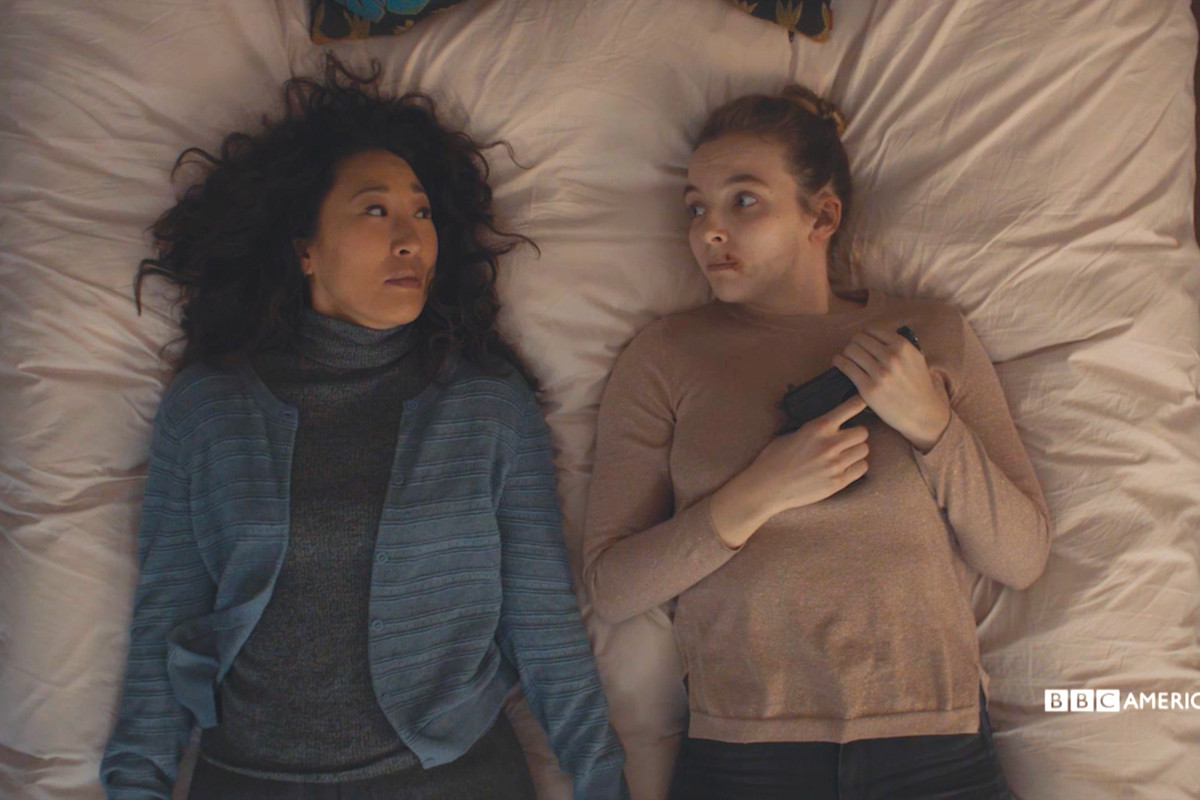ON KILLING EVE AND WHY WE STILL NEED THE BECHDEL TEST
By Hannah Churchill

Illustration by Orla Newmark
BBC America’s 2018 drama Killing Eve finished its first season with successful runs on television screens in the US and UK alike.
An action series that’s also rich and relatable, Killing Eve delves into issues of morality, corruption and empathy but, rarely, not through the eyes of a male lead. The show follows detective Eve Polastri (played by Sandra Oh), as she’s assigned to the case of assassin Villanelle (played by Jodie Comer) and the subsequent, sometimes surprising, interactions between the two. The stark lack of maleness in the leading line up is arguably the most immediately obvious way in which the show differs from your average weekday television show, particularly considering its drama meets action genre.
As Phoebe Waller-Bridge, the show’s writer, who is although perhaps best known for writing the notorious Fleabag, pointed out in an interview with Variety, that one thing which marks Eve specifically as an unusual detective character is her relative unpreparedness. Used to desk work Eve doesn’t display the typical unflinching coldness we tend to see from police or hero characters when faced with murdered bodies or locked in houses with trained killers. Throughout Eve is scared, moved and somewhat blundering, prevailing often by the skin of her teeth. She appears simply as a normal person and her ability to cope is constantly challenged by the necessity she feels to act. Another striking part of Killing Eve is the complex, painful and sometime humorous fight scenes performed by women. Villanelle, played by Jodie Comer is ruthless and charismatic, taking on men double her size in combat and often teasing her victims. As a character Villanelle too somewhat escapes the image of our 'classic' serial killer. Lacking a learing or haggard quality she is terrifying through a chameleon use of accents and characters, and her killer sharp eyebrows as well as her skill, cunning and strength. However, Villanelle too displays weakness, partly through her curiosity about Eve, which leads overall to unpredictable action and near misses.

Killing Eve passes the Bechdel test
The test, set up by Alison Bechdel (author of Fun Home, A Family Tragicomic), is a set of guidelines primarily applied to film, but also applicable to literature, theatre and television. Passing the test requires a work to have two named female characters that, at some point, have a conversation about something other than a man. The Bechdel test is important through its simplicity and reveals of how often our film and television falls short in portraying three dimensional female characters. It challenges the common positioning of female characters’ existence as reliant on the men they’re associated with and reveals our lingering distaste over flawed women taking centre stage.
The suggestion that all women have to offer is a discussion on or opinion of men is certainly harmful but it’s also unoriginal and uninteresting, and in this way, the Bechdel test shows us how low the bar still is for writers and production companies in terms of their representation of women on screen. Arguably, one thing that stands out about Killing Eve is the humanity of both the leads and their resistance to tropes as well as their ability to relate to one another. Waller-Bridge said of Killing Eve in an interview with the Guardian that she had “an appetite for transgressive women” and in a sense Eve and Villanelle transgress through their existence as well as their actions. These characters are not defined by the fact that they’re women. However, Eve and Villanelle being women does add another layer to the show and a framing of sisterhood. The two exist first outside of the limitations often written into female characters and then, as women, relate to each other in ways that perhaps couldn’t occur if one or both of them were a man. For instance, the way Eve in particular is bolstered by her emotional intelligence, able to predict Villanelle’s movements by trying to empathise, engage and not underestimate her with her would look different if she were a man.

Killing Eve demonstrates that female characters who get things wrong, exist in their own right and aren’t necessarily likeable, complicate drama and make for popular, watchable television.
Waller-Bridge’s “transgressional women” are refreshing but rare. The fact that having two female characters who are defined as by their humanity and professions before their womanhood, are funny, murderous and able to have conversations which aren’t about men (!), perhaps points at how far we have to go.
Art by
Words by
Share this article

